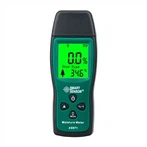What is the difference between using an oil lens and a regular lens
1. Different usage methods
A regular objective lens does not require any medium and can be directly used to observe objects. The working distance of an oil lens is much shorter than that of a dry high-power objective lens, with the shortest being only 0.1mm. Moreover, the focusing program is different from that of a dry objective lens. Special attention should be paid to the operation to prevent the oil lens from crushing the specimen or damaging the oil lens. For the first time using an oil lens, the focal length can also be adjusted according to the focusing program of a dry objective lens. First, lower the lens barrel until the objective lens is closest to the cover glass, but it must not be pressed against the specimen, and then raise the objective lens to focus. But this method has the disadvantage of squeezing out the immersion solution and causing bubbles. If the coarse focus screw is adjusted upwards, and the lens barrel has risen to the point where the oil immersed lens leaves the oil droplet, and the target object cannot be detected, it needs to be readjusted.
The lens oil used for oil lenses is tar or paraffin oil. Due to the high viscosity of cedar oil and the difficulty of wiping after use, many people use paraffin oil instead. When dripping the liquid, try to avoid the formation of bubbles as much as possible. If bubbles are formed, you can use a dissecting needle to row them aside to avoid affecting observation. After using the oil lens, lift the lens tube about 2cm and rotate it away from the optical axis. First, use lens wiping paper to wipe off most of the oil on the lens, then use lens wiping paper dipped in a small amount of xylene to wipe off residual oil stains on the lens, and finally use dry lens wiping paper to wipe off xylene on the lens.
2. Different clarity
Oil mirror is used to observe finer structures and is one of the commonly used microscopes in laboratories, with slightly higher clarity than ordinary optical microscopes. It is used to observe chlamydia, bacteria, organelles, etc.





